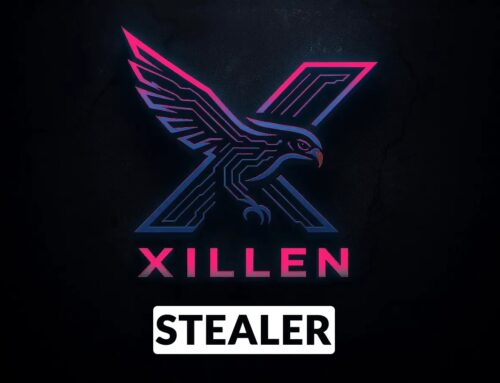
Chinese Hackers Exploiting WSUS Remote Code Execution Vulnerability to Deploy ShadowPad Malware
Chinese Hackers Weaponize WSUS Vulnerability: A Deep Dive into ShadowPad Deployment
The cybersecurity landscape has once again shifted, with a critical development demanding immediate attention from IT professionals and security analysts alike. Chinese-backed threat actors have escalated their offensive capabilities, actively exploiting a severe vulnerability within Microsoft Windows Server Update Services (WSUS) to distribute the sophisticated backdoor malware known as ShadowPad. This aggressive weaponization of a publicly available exploit underscores the persistent and evolving threat posed by state-sponsored groups.
Understanding the Threat: CVE-2025-59287 and WSUS Exploitation
The core of this new attack chain lies in CVE-2025-59287, a remote code execution (RCE) flaw. This vulnerability, when successfully exploited, grants attackers system-level access to vulnerable servers. For organizations relying on WSUS for patch management and software distribution, this represents a direct and severe compromise risk.
WSUS, a cornerstone for many Windows environments, allows administrators to manage the distribution of updates released by Microsoft to computers in a corporate network. Its inherent position at the heart of an organization’s update mechanisms makes it an attractive target. By compromising WSUS, attackers can effectively inject malicious code, disguised as legitimate updates, across an entire network. The public release of proof-of-concept (POC) code for this vulnerability in October significantly lowered the bar for exploitation, leading directly to its current weaponization by threat actors.
ShadowPad: A Sophisticated Backdoor in Play
The malware being deployed through this WSUS exploit is ShadowPad. ShadowPad is not new; it’s a highly sophisticated backdoor that has been consistently linked to multiple state-sponsored hacking groups, particularly those operating out of China. Its capabilities typically include:
- Remote Control: Providing attackers with extensive control over compromised systems.
- Data Exfiltration: Enabling the theft of sensitive information.
- Persistence: Establishing footholds within the network for long-term access.
- Module-Based Architecture: Allowing for dynamic loading of additional malicious plugins as needed.
The use of ShadowPad indicates a strategic objective beyond simple disruption; it points toward espionage, intellectual property theft, or preparation for future, more disruptive attacks within targeted networks.
Remediation Actions: Securing Your WSUS Environment
Given the active exploitation of CVE-2025-59287, immediate and decisive action is imperative for any organization utilizing WSUS. The following steps should be prioritized:
- Patch Immediately: Apply all available security updates and patches from Microsoft for WSUS. Ensure your update management systems are fully current.
- Isolate WSUS Servers: Implement network segmentation to limit the exposure of WSUS servers. Restrict inbound and outbound connections to only what is strictly necessary for their operation.
- Strong Authentication and Access Control: Enforce multi-factor authentication (MFA) for administrative access to WSUS servers. Review and restrict administrative privileges to the absolute minimum required.
- Regular Auditing and Monitoring: Implement robust logging and monitoring on WSUS servers. Look for unusual activity, failed login attempts, or unauthorized configuration changes.
- Endpoint Detection and Response (EDR): Ensure EDR solutions are deployed and actively monitoring all endpoints, including servers connected to WSUS, for signs of ShadowPad or other suspicious activity.
- Threat Hunting: Proactively search for indicators of compromise (IOCs) related to ShadowPad and the exploitation of CVE-2025-59287 within your network.
Detection and Mitigation Tools
Several tools and practices can assist in detecting potential compromises and fortifying your defenses:
| Tool Name | Purpose | Link |
|---|---|---|
| Microsoft Defender for Endpoint | Comprehensive EDR for threat detection and response. | Microsoft Link |
| Vulnerability Scanners (e.g., Tenable, Qualys) | Identify unpatched vulnerabilities like CVE-2025-59287. | Tenable Link / Qualys Link |
| Network Intrusion Detection/Prevention Systems (IDS/IPS) | Detect and block malicious network traffic patterns. | Vendor dependent (e.g., Cisco, Palo Alto, Fortinet) |
| SIEM Solutions (e.g., Splunk, Microsoft Sentinel) | Aggregate and analyze logs for suspicious activity. | Splunk Link / Microsoft Link |
Key Takeaways
The active exploitation of CVE-2025-59287 by Chinese-backed hackers to deploy ShadowPad highlights the persistent and sophisticated nature of state-sponsored threats. Organizations must prioritize patching, enhance network segmentation, and strengthen authentication protocols around their WSUS infrastructure. Proactive monitoring, threat hunting, and the strategic deployment of EDR and SIEM solutions are crucial for detecting and mitigating the impact of such compromises. Staying informed and agile in response to emerging threats remains the cornerstone of effective cybersecurity defense.





